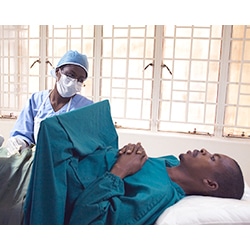HIV infection rate higher on circumcised men
According to the latest Zimbabwe Health Demographic Survey (ZHDS 2010/2011), the prevalence rate among the circumcised is 14 percent while that of the uncircumcised is 12 percent.
By Shamiso Yikoniko
The HIV prevalence rate among circumcised males between the ages of 15 and 49 in Zimbabwe is higher than that of the uncircumcised males owing to the misconception that circumcision completely shields people from HIV infection.
According to the latest Zimbabwe Health Demographic Survey (ZHDS 2010/2011), the prevalence rate among the circumcised is 14 percent while that of the uncircumcised is 12 percent.
The circumcision status of participants was established during pre-test counselling.
However, the country’s overall prevalence rate for the same age group declined to 15 from 18 percent, according to the same survey.
National Aids Council (Nac) public health officer Dr Blessing Mutede said authorities were concerned about the high rate of infection among the circumcised.
He said it was largely a result of “risk compensation behaviors”.
Most men, after circumcision, harbor the false impression that they have been equipped with an invisible condom, he added.
“It is a worrying development that at a time when we are promoting male circumcision as a preventive measure to combat HIV, we are recording a high prevalence rate amongst the group that has been circumcised largely due to uninformed risky compensation behaviors,” he said.
“Most people forget that being circumcised will only safeguard a person from contracting HIV up to a certain percentage and they are still at a 40 percent risk of contracting the virus.
“What we encourage everyone, circumcised or uncircumcised, is to practice safe sex all the time.”
During the survey, a sample of 5 650 men aged between 15 and 49 were tested for HIV. They were also asked about their circumcision status. The information was, thereafter, used to determine the relationship between HIV prevalence and circumcision.
The World Health Organization recommends circumcision for HIV prevention in “generalized epidemic settings” where prevalence of the virus is high and male circumcision is low.
Zimbabwe embraced the recommendation and anticipated that it will prevent 42 percent of all new infections between 2015 and 2025 if 80 percent of males in the country are circumcised. The country also hopes to reduce HIV prevalence to about 7 percent, in addition to other benefits.
The country has carried out about 70,000 circumcisions since the program began in 2009.
Experts claim the procedure can reduce HIV infection risk, in part because of physiological differences that decrease the susceptibility to infection among circumcised men.



